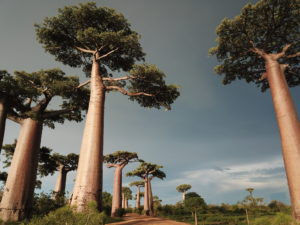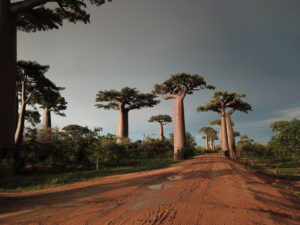Magnificent flowering of Madagascar’s baobab trees
Known for their majestic presence and amazing adaptability, baobab trees grace the landscape of Madagascar. With their impressive trunks and unique bulbous shapes, these iconic trees capture the imagination of tourists and locals alike. In addition to its striking appearance, baobabs have an attractive flowering period that produces a variety of breathtaking and delicate flowers. This article explores the fascinating flowering times of Madagascar’s baobab trees and sheds light on their importance and beauty.
Understanding when the baobab trees bloom
The blooming season of the baobab trees in Madagascar is truly a sight to behold. During late spring and early summer, usually December through June, the baobab trees undergo a fascinating transformation. At this time of year, the tree’s characteristic bare branches are adorned with bright, fragrant flowers, creating a surprising contrast to the tree’s rugged appearance.
The beauty of the baobab flower
The flowers of the baobab tree are a sight to behold. These large, white flowers have an intricate design made up of numerous delicate petals, forming a radiant appearance. Its scent wafts through the air and attracts countless pollinators, including bats and nocturnal insects that play an important role in the tree’s reproductive cycle. When in bloom, they create a stunning contrast against the backdrop of sturdy tree trunks, creating a visual feast for those lucky enough to witness this natural phenomenon.
Ecological importance
The flowering period of the baobab tree is of great ecological importance. The flowers serve as an important source of nectar for various pollinators, aid in tree reproduction, and facilitate cross-pollination. This process ensures genetic diversity and strengthens the baobab population. In addition, pollinators themselves benefit from the abundance of nectar, which sustains populations and contributes to the biodiversity of the entire surrounding ecosystem.
Cultural importance and local traditions
In Madagascar, the baobab tree has immense cultural importance. It is considered a sacred symbol of strength, resilience and longevity. The flowering of the baobab trees is often celebrated through traditional ceremonies and festivals, where locals gather to admire the beauty of the flowering trees. These events commemorate the deep connection between the people of Madagascar and nature, and celebrate the role of the baobab tree as a cultural symbol.
Flowering season protection
As the world becomes more aware of ecosystem vulnerability, efforts to protect the baobab tree’s flowering season are gaining momentum. Conservation activities and sustainable practices are in place to protect these magnificent trees and their delicate flowers. By raising awareness, supporting local communities and promoting responsible tourism, we can ensure the survival of this amazing natural phenomenon for generations to come.
During the blooming season of Madagascar’s baobab trees, the sights are breathtaking, attracting locals and tourists alike. The baobab tree, with its impressive height and enchanting flowers, contributes to the island’s natural and cultural heritage. By cherishing and protecting these iconic trees, we ensure that future generations will have the opportunity to witness the enchanting beauty of the baobabs during their blooming season. Let’s guess!


Known for their majestic presence and amazing adaptability, baobab trees grace the landscape of Madagascar. With their impressive trunks and unique bulbous shapes, these iconic trees capture the imagination of tourists and locals alike. In addition to its striking appearance, baobabs have an attractive flowering period that produces a variety of breathtaking and delicate flowers.…